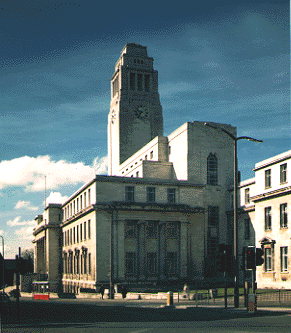An institution of higher education in Leeds, West Yorkshire, England. Its precursors
were the Leeds School of Medicine, founded in 1831, and the Yorkshire College of
Science, founded in 1874. They merged in 1884, and in 1887 combined with Manchester
and Liverpool institutions to become Victoria University. In 1904 Leeds received its
own royal charter as an independent university. Growth was steady until the 1960s
when massive expansion took place, and it is now one of the United Kingdom's largest
universities. There are over 14,000 full-time undergraduates and over 2,000 full-time
postgraduates. Ten per cent are from overseas and about 12 per cent are mature students.
The university is on a single large and compact site about 1 km from the city centre.
Dominating the campus is a white clock tower known as the Parkinson Building. Surrounding it
is an 18th-century building (Beech Grove House), the red-brick towers of the Great Hall,
Victorian houses, and 20th-century architecture. Modern buildings include a medical faculty,
a science block, and a computer centre. The university's campus merges with that of Leeds
Metropolitan University, creating a massive central core of halls, student union buildings,
and teaching and administrative blocks.
The university is governed by a council, senate, and chancellor, and it is organized in six
faculties. First-degree courses are of a traditional pattern. Single and dual honours courses
range across all subjects, and there are about 500 different subject combinations. Research
work is substantial, much of it funded by industry, particularly in engineering, economics,
animal studies, and physical sciences. Leeds has one of the largest university collections,
with over 2.3 million books in 35 libraries, and there are about 1,500 computer terminals for
student use.










